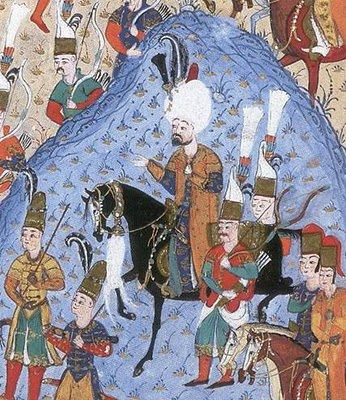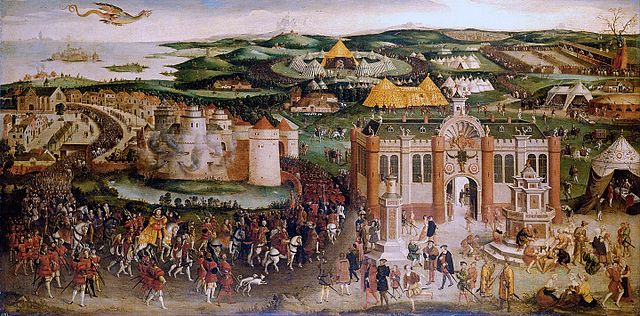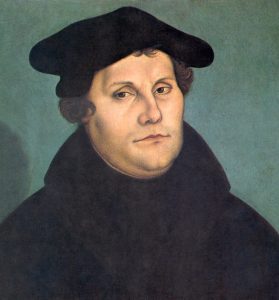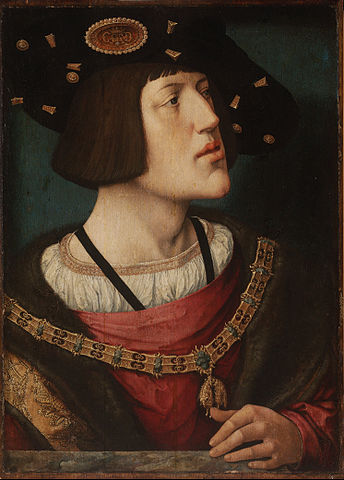1520: A Year in Review
I started writing A Year in Review posts in December, 2014. It felt like an appropriate way to wind up the year. The 100th anniversary of the beginning of World War I (1) had dominated the discussions in Historyland and I wanted to talk about some of the other things that had happened during that year. That led me to look at 1814, which proved to look remarkably similar to 1914.
I’ve been writing A Year in Review posts every December since then. Some years are obvious choices. (I’m looking at you, 1920) But even the years that don’t include big historical anniversaries, with related commemorative exhibits and revisionist articles aimed at thoughtful readers, are worth a look.
Consider the year 1520:
 Suleiman I—also known as the Lawgiver and, appropriately as far as I’m concerned, the Magnificent— took the Ottoman throne at the end of September. (And I do mean “took”. Ottoman succession was a blood-soaked “winner takes all” contest between male family members. (2)) Arguably the greatest of the Ottoman emperors, he defended Islam against Christendom to the west and Shiite “heretics” to the east and expanded the empire’s boundaries from Budapest to Basra. Ottoman expansion to the west ended when Suleiman laid siege to Vienna in 1529. The Hapsburg emperor Charles V summoned troops from across Christendom to successfully defend the city. Suleiman retreated at the end of the campaign season.(3) He never attempted to conquer Vienna again, but battles between the Hapsburgs and the Ottomans were a recurring event throughout the sixteenth century.
Suleiman I—also known as the Lawgiver and, appropriately as far as I’m concerned, the Magnificent— took the Ottoman throne at the end of September. (And I do mean “took”. Ottoman succession was a blood-soaked “winner takes all” contest between male family members. (2)) Arguably the greatest of the Ottoman emperors, he defended Islam against Christendom to the west and Shiite “heretics” to the east and expanded the empire’s boundaries from Budapest to Basra. Ottoman expansion to the west ended when Suleiman laid siege to Vienna in 1529. The Hapsburg emperor Charles V summoned troops from across Christendom to successfully defend the city. Suleiman retreated at the end of the campaign season.(3) He never attempted to conquer Vienna again, but battles between the Hapsburgs and the Ottomans were a recurring event throughout the sixteenth century.
Charles V (see above), the young ruler of the enormous Hapsburg empire,(4) was dealing with problems on the home front. Charles was the grandson of Isabela and Ferdinand of Castile and Aragon, but he had been raised in Flanders, which was his father’s home kingdom. The royal sixteen-year-old knew little, and apparently cared less, about the Spanish kingdoms of Aragon and Castile when he was named co-regent with his mother, Juana the Mad, in 1516. (5) He arrived in Spain accompanied by a large retinue of Flemish nobles, which did not please the local nobility, and immediately began to raise taxes of all sorts, which did not please anybody. In 1519, Charles was elected Holy Roman Emperor after some spirited and expensive campaigning, which was paid for largely by Spanish taxes. When he left for Germany to cement his position there, he put his former tutor, Dutch bishop Adrian of Utrecht, in charge. In February 1520, cities across Castile rose up in what became known as the Comuneros Revolt. By November, the kingdom of Castile was in the grips of a full-scale rebellion. In addition to reduced taxes and a bigger role in government, the comuneros, who controlled eighteen cities throughout the heart of Castile, wanted to name Charles’ mother sole ruler, mad or not. At a minimum, they wanted Charles to live in Castile. The Comueros Revolt was finally defeated in April, 1521, but even though they lost the war they won the peace. Charles V began to spend more time in Spain, learned Spanish, and appointed Castilians to important positions in his government.
 On June 7, Henry VIII of England and Francis I of France began an 18-day celebration/political summit meeting that became known as the Field of the Cloth of Gold. Intended to celebrate the newly formed Treaty of Universal Peace which the European powers had signed in 1518, the event was extravagant even by the standards of 16th century royals. Peace treaties not withstanding, competition and ambition were the ruling (ha!) motivations between the young (-ish) rulers. And compete they did, not only in sporting events but in the kingly sport of extravagant spending. Each of the kings attempted to dazzle the other court with feasts, tournaments, masquerades, dazzling costumes and elaborate tents. A year later, the idea of peace was already crumbling at the edges.
On June 7, Henry VIII of England and Francis I of France began an 18-day celebration/political summit meeting that became known as the Field of the Cloth of Gold. Intended to celebrate the newly formed Treaty of Universal Peace which the European powers had signed in 1518, the event was extravagant even by the standards of 16th century royals. Peace treaties not withstanding, competition and ambition were the ruling (ha!) motivations between the young (-ish) rulers. And compete they did, not only in sporting events but in the kingly sport of extravagant spending. Each of the kings attempted to dazzle the other court with feasts, tournaments, masquerades, dazzling costumes and elaborate tents. A year later, the idea of peace was already crumbling at the edges.
But 1520 wasn’t entirely about young male rulers:
 In December, Luther burned a Papal Bull excommunicating him, thereby finalizing his break with the Catholic Church. (This was a grand gesture, but did not actually stop his excommunication, which went into effect on January 5. ) The Protestant Reformation was on!
In December, Luther burned a Papal Bull excommunicating him, thereby finalizing his break with the Catholic Church. (This was a grand gesture, but did not actually stop his excommunication, which went into effect on January 5. ) The Protestant Reformation was on!
(1) Talk about the shot heard ‘round the world!
(2) The Ottomans weren’t alone in this. Primogeniture was not the only, or even the most common, form of royal succession.
(3) Most wars were fought in summer and fall in the pre-modern world. Not only was fighting in winter miserable, but roads were bad and it was difficult to supply troops. For that matter, forage wasn’t great in spring before crops began to grow. Hungry armies don’t fight well.
(4) He inherited Burgundy and the Netherlands from his father, Philip of Burgundy; Castille, Aragon, Naples, and big chunks of the Americas from his mother, Joanna of Castile and Aragon; and much of Germany, Austria, and Northern Italy from his grandfather, the Holy Roman Emperor Maximilian
(5) The question of whether Juana was mad or not is a question of historical debate. One thing is certain, her husband and father worked together to have her imprisoned as a madwoman only after she inherited the throne of Castile in 1516—a throne they then competed with each other to control. I leave you to draw your own conclusions.






Which brings me back to the same old question: If women ever crash the cement or , glass otherwise impenetrable ceilings will the unending conflicts and wars ever stop?